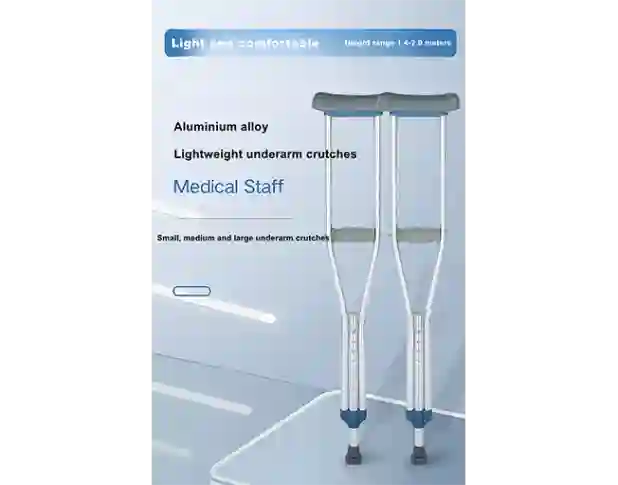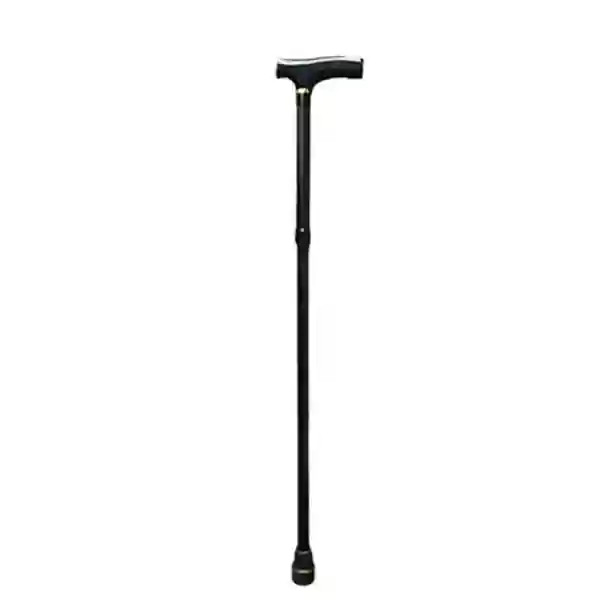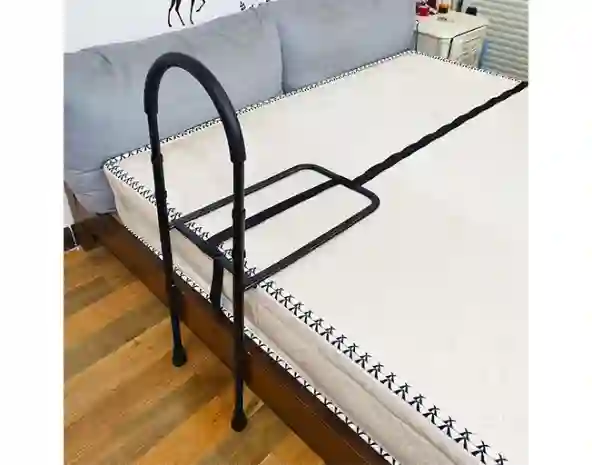Choosing Crutches: Forearm Crutches or Underarm Crutches Explained
Time : Oct 14, 2025 View : 1,569
People who need to recover from injuries or control chronic conditions use crutches as their primary mobility assistance tools. The selection of appropriate crutches determines how well you will feel during recovery and how quickly you will heal and maintain your ability to move. The market features two primary crutch categories which include forearm crutches and underarm crutches. Each crutch model presents distinct characteristics together with its own set of advantages and disadvantages. The selection of your suitable mobility aid depends on your complete understanding of the distinct characteristics between these two options.

Overview of Crutches and Their Purpose
The weight of the body shifts from legs to upper body through crutches which allow people to walk when their legs become weak or get injured. The devices assist users by providing stability and support during their movements.
What Are Crutches Used For
People use crutches to walk when they cannot put their full weight on a leg because of fractures or sprains or surgical procedures or ongoing mobility issues. The devices help people with injured limbs to move safely while minimizing the stress on their affected limbs.
When Do You Need to Use Crutches
The need for crutches arises when you have had surgery or when you experience a lower limb injury that includes fractures or ligament tears or when you have a medical condition which makes walking independently challenging.
Key Differences Between Forearm and Underarm Crutches
You need to understand the design differences and operational characteristics of forearm and underarm crutches before selecting the appropriate model for your needs.
Structural Design and Components
The design of underarm crutches includes armpit-supporting pads and handgrips positioned at the middle section of the shaft. The design of forearm crutches includes a forearm cuff and a hand grip for user control. The forearm crutch features a comfortable handgrip made from durable materials and an anodized aluminum leg with a high-quality rubber tip.
Weight Distribution and Support Mechanism
The weight distribution of underarm crutches occurs through the axilla (underarms) but forearm crutches distribute weight through the arms and wrists. The method of weight distribution between these two types of crutches leads to different levels of user fatigue and changes in body posture.
User Mobility and Range of Motion
The compact design of forearm crutches enables users to move more freely in restricted areas. Underarm crutches present more challenges for users but they offer better support to people who are starting to use mobility devices.
Advantages and Disadvantages of Forearm Crutches
People who require ongoing support tend to select forearm crutches because of their comfortable design.
Enhanced Mobility for Long-Term Users
The use of forearm crutches enables users to walk with a more natural stride while providing improved mobility. The devices work best for people who need to walk on different surfaces or move through dense areas.
Improved Posture and Arm Movement
The back of users remains straighter than when using underarm crutches. The ergonomic design of the crutch along with its correct elbow angle distribution pressure forces across the handgrip. The design enables users to maintain proper posture while working for extended periods.
Learning Curve for New Users
The initial learning process for forearm models demands better coordination skills. The learning process for forearm models becomes challenging for new users who lack proper instruction from a professional.
May Require Greater Upper Body Strength
The use of forearm crutches depends on upper body strength because they require arm power for support so they might not work for elderly people or those with weak upper body unless they receive proper training.
Advantages and Disadvantages of Underarm Crutches
The medical staff provides underarm crutches as a short-term solution for patients who need them after injuries or surgical procedures because they are easy to use.
Easier to Learn for Short-Term Use
The user-friendly design of underarm crutches enables new users to operate them without difficulty. Underarm crutches require basic training for most users to learn their operation.
Provides Stable Support for Injuries
The devices provide strong support through their ability to stabilize both body sides at once which benefits patients who need help with balance during their initial recovery period.
Risk of Nerve Compression in the Armpits
The improper use of crutches results in nerve compression within the axilla region which produces numbness or tingling sensations that doctors call crutch palsy.
Reduced Comfort During Extended Use
The extended use of these devices creates pressure on the sensitive underarm tissues which leads to discomfort. These devices do not work well for extended rehabilitation periods because of this issue.

Factors to Consider When Choosing Between the Two Types
People need to assess their health status and life needs when making decisions about their health.
Duration of Use (Short-Term vs. Long-Term)
Underarm crutches work well for short-term needs such as post-surgical recovery but forearm crutches provide better support for extended use because of chronic conditions or permanent disabilities.
User’s Physical Condition and Upper Body Strength
The use of forearm models requires users to have powerful arms yet they create better ergonomic conditions that improve with time. The underarm type remains functional for users with limited strength but requires regular checks for signs of discomfort.
Environment and Daily Activity Requirements
People who need to navigate tight spaces and crowded areas should choose forearm crutches with a compact design. The underarm design might be more suitable for you if you need to recover at home with limited outdoor mobility.
Who Should Choose Forearm Crutches?
Forearm models provide the most suitable option for people who want to maintain their independence through time while gaining better control of their mobility device.
Individuals with Chronic Conditions or Disabilities
People with cerebral palsy or multiple sclerosis use their forearms for support because they provide better ergonomics than other options in the long run.
People Requiring Long-Term Mobility Assistance
People who need to recover from major orthopedic surgeries or manage degenerative joint diseases should use shoulder bags instead of underarm bags because shoulder bags distribute weight more evenly.
Who Should Choose Underarm Crutches?
These solutions work best for situations where recovery will take weeks instead of months.
Temporary Injuries Like Sprains or Fractures
The underarm design of these devices makes them suitable for supporting patients who need non-weight-bearing periods due to short-term injuries like ankle sprains.
Patients Recovering from Surgery
The underarm support provides essential temporary assistance to post-operative patients who require help during their initial healing period before they can stop using aids.
Tips for Proper Usage and Safety with Both Types of Crutches
The selected type of equipment will function best when properly fitted to prevent injuries during use.
Correct Fitting and Adjustment Techniques
You can modify the height by pressing the spring buttons on the leg extensions to extend or retract them until you reach the correct height. The grip position for both types requires your elbows to bend at a 30° angle.
Preventing Common Injuries from Improper Use
Avoid full body weight on armpits; lean forward, using hands for support. Position cuffs on forearms for circulation and arm mobility. Regularly inspect rubber tips for wear to prevent slips indoors and outdoors.
Xunyu Medical: A Trusted Supplier for Mobility Aids
The selection of dependable assistive devices including crutches depends heavily on manufacturing quality because Xunyu Medical demonstrates exceptional standards in this field which ensures user safety.
About Xunyu Medical’s Product Range
The company Foshan Xunyu Medical Technology Co., Ltd operates from Danzao Town within Nanhai District of Foshan City in Guangdong Province. The company focuses on assistive device manufacturing for elderly needs through their production of crutches and walkers and shower chairs and bedside commodes. The company produces bedside handrails and wheelchairs with manual and electric options and bath chairs which all prioritize user comfort.
Commitment to Quality, Safety, and User Comfort
Our team specializes in creating assistive medical devices which include wheelchairs and crutches. The company uses ergonomic design principles to achieve success through its global distribution network that spans Europe and America and Asia-Pacific regions which has built widespread trust in Xunyu Medical.

Conclusion
Choosing between forearm and underarm crutches depends on your mobility needs. Forearm crutches excel for long-term use, while underarm crutches suit short-term recovery, ensuring safety and comfort with proper fit.
FAQs:
Q1: Which type of crutch is most suitable for extended periods of use?
A: Forearm crutches are the better choice for long-term use, as they promote proper posture, enable easier navigation in confined spaces, and reduce the risk of underarm injuries compared to other crutches.
Q2: Can patients transition from underarm crutches to forearm crutches during recovery?
A: Yes! Patients can switch from underarm to forearm crutches once they gain sufficient strength, as underarm crutches are typically used initially before transitioning to forearm crutches for extended recovery.
Q3: What signs indicate that my crutches need proper adjustment?
A: When standing straight with relaxed shoulders, your elbow should form a 30-degree angle while holding the grips. Ensure both crutches are set to the same height and verify that rubber tips are intact before use.


